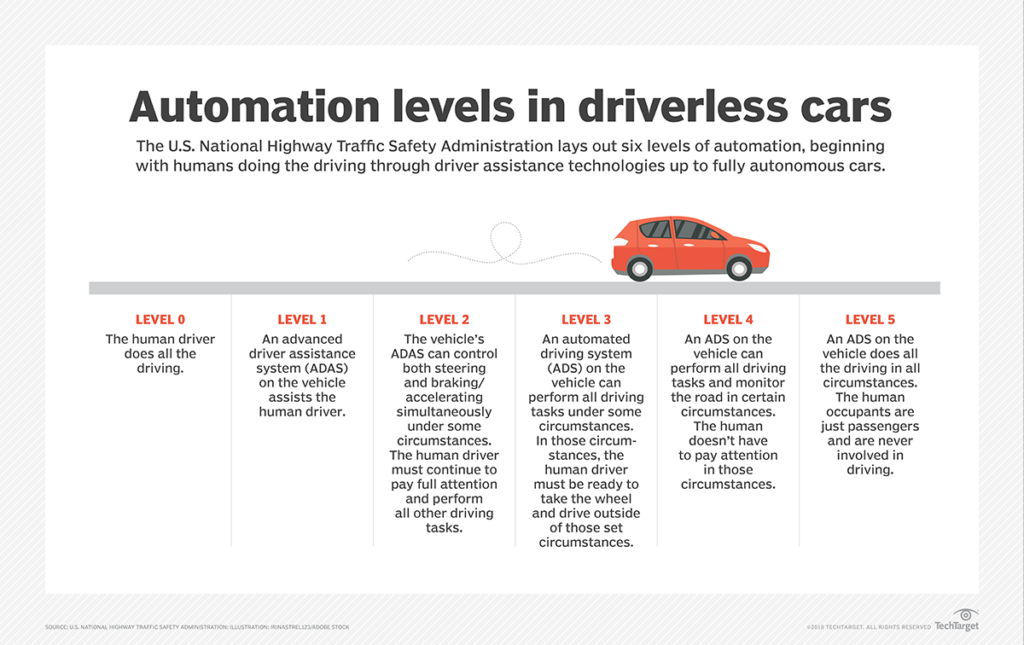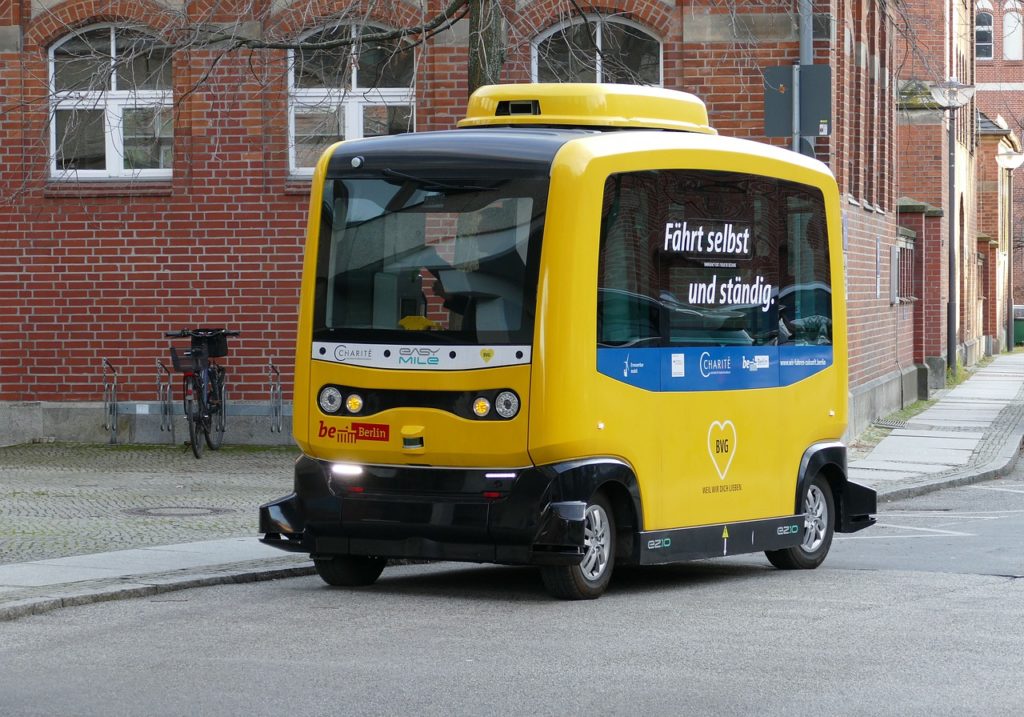Autonomous, driverless, or self-driving, while they come in a variety of names, these vehicles are seeing enormous advances in technology in the automotive sector. Companies are betting that vehicles integrated with cameras, sensors, and computers with intricate software will allow for cars that can literally drive themselves to any destination with simple human interaction.
The dream to make this a reality is very competitive. Leading companies like Google, Tesla, Volkswagen, and even Porsche, are all developing their own version of these cars. Each is using different techniques to help accomplish this goal, with a variety of success between them.
The economic benefits of driverless automobiles could be tremendous if they can drastically reduce the number of crashes. According to the National Highway Traffic Safety Administration, injuries cost the economy $57.6 billion in lost working productivity and $594 billion in lost life and reduced quality of life.
In principle, if driverless cars dominated the roads, traffic would flow more smoothly and there would be less congestion. The occupants of fully automated cars could accomplish constructive tasks while going to work. People who are unable to drive owing to physical constraints could gain new independence and be able to work in industries that involve driving thanks to autonomous vehicles.
Levels of automation
Level 0 No Automation
The driver performs all operations in the cars. Steering, braking, accelerating, turning, and importantly, avoiding accidents.
Level 1 Driver Assisted
This level of autonomous driving is still reliant on the driver. An onboard computer will be able to control steering or braking (not both). This type of technology is fairly old, it is often advertised as “cruise control” or “autopilot”, this is often used on long motorway journeys where the road is often very straight for hundreds of miles.
Level 2 Partial Assistance
Most cars today are at this level. A computer, with very complex software, can take over some driver functions. A driver is still needed in the car. This can include “assisted cruise control”, where a car can drive while having some awareness of other vehicles around it to avoid collisions. Tesla’s cars are famous for having this technology. Toyota also incorporates this technology too, with self-parking, called “auto-parking”.
Level 3 Conditional Assistance
This type of car can mostly operate by itself. This can include actively controlling steering and braking (at the same time) and monitoring people and other vehicles around it. The driver is not needed to drive the car but is needed to stop suddenly if needed. The new Audi A8 has this feature.
Level 4 High Automation
These cars can drive themselves with a driver on board. Only in some situations, the driver can switch to autonomous driving and sit back and relax. If the car is confused or is unable to make a decision, it will alert the driver and hand over control. There are currently no cars that can perform at this level.
Level 5 Complete Automation
Driving without human control is a level 5 autonomous car. These cars will not need to have steering wheels, driving pedals, or even seats facing the direction of motion. It is entirely possible for these cars to have beds and even allow for cross country transport without the need to stop for a hotel stay. No cars (currently) are able to operate at this level.

The moral barriers to car autonomy
One of the most important challenges that computer programmers and manufacturers will have to address is the morality of self-driving cars. In certain cases, the cars will have to be hard-coded to choose one action over another — but in the worst-case scenario, both options may be fatal.
For instance, if a car had to avoid hitting a group of teenagers standing on the side of the road who was riding a scooter in its direction at incredible speeds. The car would have to choose between perhaps harming one and endangering the other in a split second.
These moral difficulties must be acknowledged, and a course of action must be built into the future self-driving automobile for all possible cases.
If such incidents occur, lawmakers will have to decide how and who would be held responsible.
Teacher Resources
Level: Intermediate: B1/B2
Running Time: 90 minutes +
Key Terms
To understand this debate it is useful to learn the following words and concepts.
Automation
Driverless
Moral choices
Partial / Conditional autonomy
Constraints
Accomplishments
Automotive industry
Occupants
Pros and Cons of Driverless Cars
Driverless cars are safer and reduce the total number of accidents
Agree
As there is no possibility of human error or distraction, it’s likely there will be fewer accidents and reduced fatalities on the road, which many experts are describing as the biggest pro of self-driving cars.
These cars can also work with other cars as they will have network equipment on board, so they can actively “speak” to other vehicles on the road.
We will no longer have traffic jams or huge car accidents as cars will be informed instantaneously and then make adjustments to their route.
Disagree
Increasingly connected vehicles mean they are more vulnerable to the threat of hackers, who may be able to take over control of the cars. Equally, there are privacy concerns in the car being tracked and knowing your frequent destinations, i.e. your home.
There have already been accidents from Tesla cars where the computer, the BBC reports:
The National Highway Traffic Safety Administration (NHTSA) said it was acting following 11 Tesla crashes since 2018 involving emergency vehicles.
In some cases, the Tesla vehicles “crashed directly into the vehicles of first responders”, it said.
The investigation will cover roughly 765,000 Tesla cars made since 2014.
BBC
It is good for the economy
Agree
This technology will create a new type of sector. Cars will become more like robots, and so we need a whole new generation of technicians, engineers, and mechanics.
If we are to develop the most advanced type of driverless vehicle, it will create a new lifestyle. We will no longer be bound by distance. Hotels can be built into cars or vans. There will be a new leisure industry made around the space inside of these vehicles.
Morgan Stanley has conducted research indicating that self-driving cars could save the economy $488 billion in annual savings from reducing traffic accidents and another $158 billion in savings due to reduced fuel costs.
Investopedia
Disagree
Cab drivers and their cars, as many people are aware, are in high demand nowadays, particularly in densely populated metropolitan areas such as London and New York. It is cheaper to pay for a taxi every day than to park your car in these cities. Not to mention the difficult driving environment in these places.
Taxi drivers are turning to ride-hailing services like Uber and Lyft, which have a more structured and sophisticated method for delivering passengers. However, as driverless cars enter the car-hailing sector, taxi drivers’ jobs and services will undoubtedly be jeopardised. If you don’t require a human driver to get you from point A to point B, then human-operated taxis are unnecessary.
This situation is exacerbated by the fact that Alphabet (Google’s parent firm) has launched Waymo One, self-driving taxi service in Arizona. Waymo One is a relatively young firm that has been established in recent years, and some see it as a competitor to Tesla because of its revolutionary autonomous technology.
People can save money on transportation
Agree
Because they are intended for fuel efficiency, self-driving cars can save users a lot of money on gas when compared to traditional cars. Autonomous cars can be constructed to be purely electric or dual-fueled, with the AV running on both electricity and gas. Human drivers may want to operate fully electric autonomous cars or choose a more flexible solution that includes both fueling choices, depending on their own preferences. Now, let’s look at the disadvantages
Disagree
Because the business is still relatively new, maintenance and starting expenditures are likely to rise in the coming years. Driver-related issues may or may not be covered by your preferred insurance company for your AV or self-driving vehicle, and may even be deemed a luxury. Truck drivers would have to figure out how to cover their self-driving trucks without jeopardizing their salary.
Read more
Futureproof: 9 rules for Humans in the Age of Automation
No Man’s Land: The Untold Story of QF72: the untold story of automation and QF72
The AI Republic: Building the Nexus Between Humans and Intelligent Automation
Join or Die: Digital Advertising in the Age of Automation
25 Astonishing Self-Driving Car Statistics for 2021
Self-driving cars could be on UK roads this year, the government announces
10 ASTONISHING TECHNOLOGIES THAT POWER GOOGLE’S SELF-DRIVING CARS
How Google’s Self-Driving Car Will Change Everything
How driverless cars will change our world
Images of people used under license from Generated Photos








